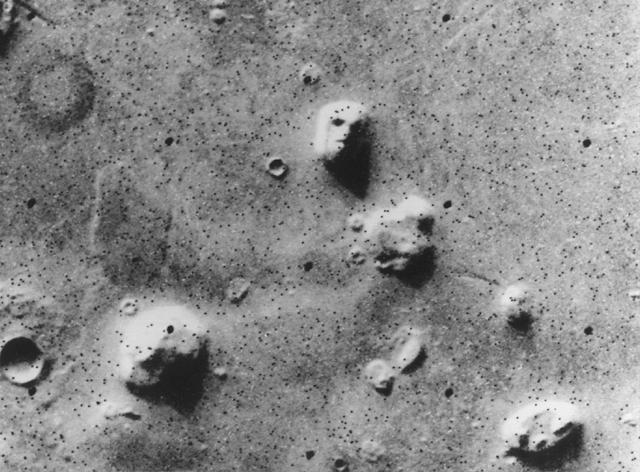The observatory is a great place for the scientifically inclined, or the budding astronomer, to visit. One can get up close and personal with the telescopes as well as spending some time in the informative visitor centre. To reach the observatory, turn off Highway 97 at the sign at White Lake Road, 650 metres south of the Highway 3A intersection south of Kaleden. The observatory is about 8 kilometres down White Lake Road.
Near the 26 metre telescope is the observatory's visitor centre, a repository of information on radio astronomy understandable to the layperson. The centre describes what it is that the observatory does, how it does it and why it does it. Included in the information presented is near real time data gathered by whichever of the instruments is active at that time.
Within the visitor centre, on the desk beside the model of the planet Mars (see below) one will find the visitors' log, AKA
the visitor centre's guest book.
An interesting display in the centre is a very detailed scale model of the planet Mars. To aid visitors in relating to the model small markers have been attached to the model depicting the landing spots of various Mars probes, including
Viking 1, which arrived in 1976,
Viking 2, which also arrived in 1976,
Mars Rover "Opportunity", which arrived in 2004 and
Mars Rover "Curiosity", which arrived in 2012. Another marker points out the location of the infamous
Face on Mars,
popularized as a potential "alien artifact" in books, tabloids, radio talk shows, television, and even a major motion picture. -
NASA

Founded in 1960, this research facility is Canada's largest radio astronomy observatory. Built at a radio quiet site in the Okanagan Valley in south central British Columbia, it presently employs three different instruments - a 26-metre fully steerable dish, a seven-antenna
aperture synthesis array and a solar radio flux monitor. The facility is operated by the National Research Council of Canada’s Herzberg Institute of Astrophysics.
The first telescope at the facility was the 26-metre dish, which was put into operation June 21, 1960. Its primary purpose was the study of hydrogen in the universe.
On April 17, 1967, the 25.6-metre radio telescope at Penticton was used in conjunction with the 46-metre telescope at the Algonquin Radio Observatory to simulate the resolution of a giant radio telescope measuring 3,074 kilometres (the physical distance between the two instruments). It was the first successful long distance interferometry experiment ever conducted.
From Astro Canada
The next was a Very Low Frequency (VLF) array, which consisted of 1,700 cedar posts extending for 1.3 kilometres in the shape of a “T” covering a surface area of 65,000 square metres, supporting a network of several thousand metres of metallic wires forming the antenna of the radio telescope. It was used primarily between 1965 and 1969 during a period of low sunspot activity, when VLF waves from space can pass through the atmosphere.
Near the end of the 1960s a
synthesis array telescope was begun, consisting of a pair of 8.5 metre parabolic antennas which simulated a larger radio telescope with a 600-metre diameter. Today the array has been enlarged to seven parabolic antennas arrayed along a 600 metre baseline track.
Newly constructed is a new Hydrogen Intensity Mapping Experiment, which is described in brief below.
The Canadian Hydrogen Intensity Mapping Experiment (CHIME) is an interferometric radio telescope under construction at the Dominion Radio Astrophysical Observatory in British Columbia, Canada which will consist of four 100 x 20 metre cylinders (roughly the size and shape of snowboarding half-pipes) populated with 1024 radio receivers sensitive at 400–800 MHz. The telescope's low-noise amplifiers are being built with components adapted from the cellphone industry and its digital processing makes use of high-end computer gaming technology. The telescope has no moving parts and observes half of the sky each day as the Earth turns. CHIME is a partnership among the University of British Columbia, McGill University, the University of Toronto and the Dominion Radio Astrophysical Observatory.
From Wiki